Hola a todos como están? Hoy quiero compartir con ustedes una receta de lo más deliciosa, que tiene influencias españolas muy fuertes, principalmente de la paella (en próximos días subiré también una receta de paella), y que por más que se vea demasiado complicada, con unos poco truquitos pueden hacerla fácilmente y les quedará muy deliciosa.
Hi everybody how are you? Today I want to share with you a most delicious recipe, which has very strong Spanish influences, mainly from paella (in the next few days I will also upload a paella recipe), and that as much as it looks too complicated, with a few little tricks you can make it easily and it will be very delicious.
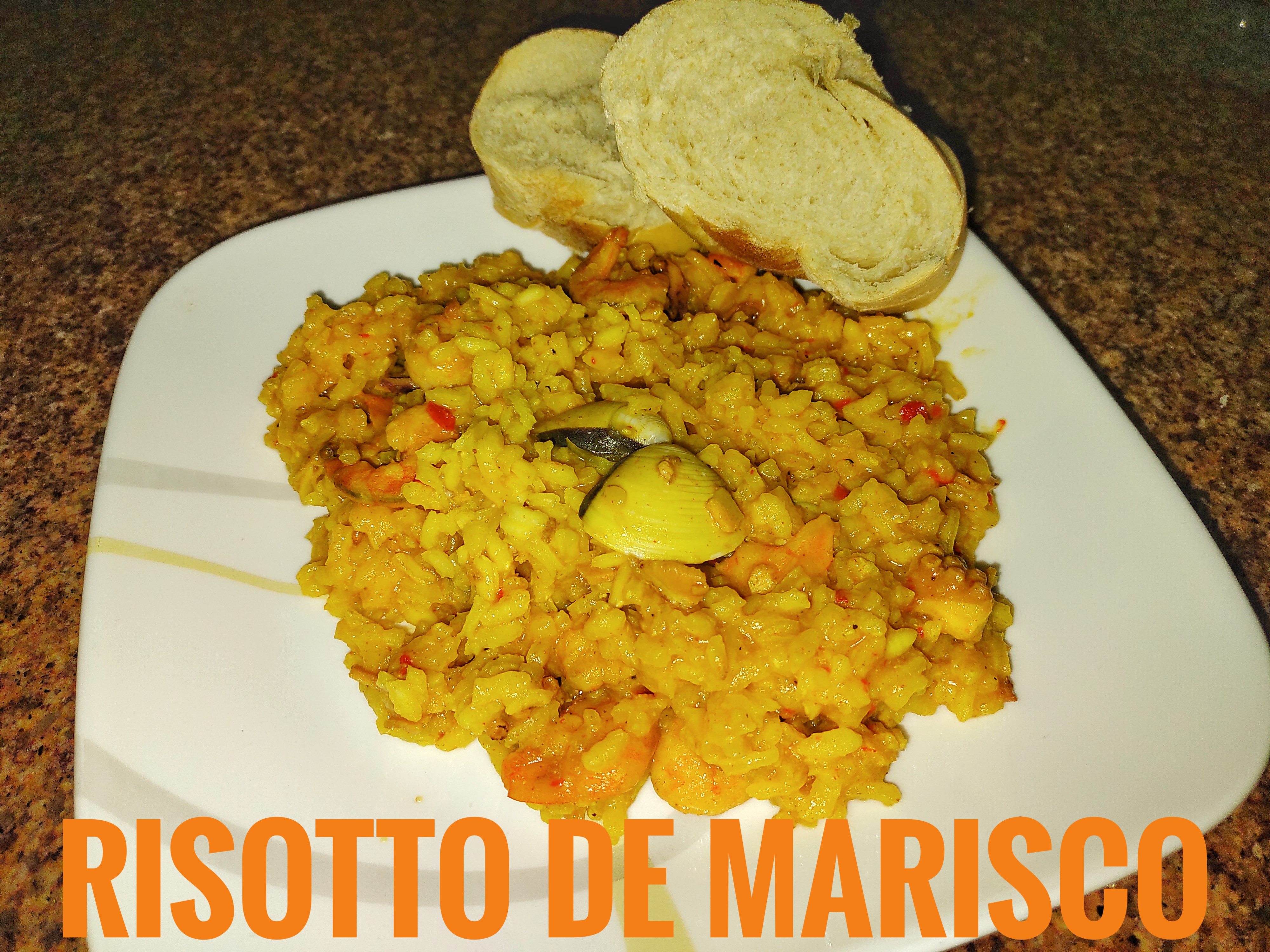
La principal diferencia entre lo que es una paella y este risotto de marisco radica en el tipo de arroz que vamos a utilizar, arroz arborio, que es el especial para el risotto, ya que además de ser más grande que el grano que conocemos normalmente, al cocinarse provoca mayor cremosidad en el plato, por lo que se te derrite en la boca, siendo muy delicioso.
The main difference between what is a paella and this seafood risotto lies in the type of rice that we are going to use, arborio rice, which is special for risotto, since in addition to being larger than the grain that we normally know, When cooked, it causes more creaminess in the dish, so it melts in your mouth, being very delicious.
Ingredientes / Ingredients:
- 600 gr de Arroz Arborio / 600 gr of Arborio Rice
- 200 gr de Camarones / 200 gr of Shrimp
- 100 gr de Pulpo / 100 gr of Octopus
- 100 gr de Almejas / 100 gr of Clams
- 1 Cebolla Grande / 1 Big Onion
- 4 Ajíes Dulces / 4 Sweet Peppers
- 5 Dientes de Ajo / 5 Garlic Cloves
- 50 gr de Tocineta / 50 gr of Bacon
- 1.5 lt de Caldo de Pollo o Marisco / 1.5 lt of Chicken or Seafood Broth
- Vino Blanco, el necesario (unos 200 a 500 ml) / White Wine, the necessary one (about 200 to 500 ml)
- 2 Cucharadas de Concentrado de Tomate / 2 Tablespoons of Tomato Concentrate
- 1 Cucharadita Azafrán en Polvo, Ajo en Polvo y Cebolla en Polvo / 1 Teaspoon Powdered Saffron, Powdered Garlic and Powdered Onion
- Sal y Pimienta, al gusto / Salt and Pepper, to taste
- Aceite, para sofreír / Oil, yo fry.
Preparación / Preparation:
1- Preparamos todos los ingredientes para la cocción del arroz / We prepare all the ingredients for cooking the rice.
Comenzamos lavando, limpiando y cortando en cuadritos pequeños todos los vegetales. Podemos hacer lo mismo con la tocineta, aunque también puedes dejarlo en trozos más grandes.
We start by washing, cleaning and dicing all the vegetables. We can do the same with the bacon, although you can also leave it in larger pieces.

En la casa compramos camarones pelados, lo que fue un error, ya que las cabezas y los caparazones podemos utilizarlos para hacer el caldo para el risotto.
At home we buy peeled shrimp, which was a mistake, since the heads and shells can be used to make the broth for the risotto.
Aunque como ya habiamos hecho esto, aprovechamos unos huesos de pollo y cocimos el pulpo antes de agregarlo al sartén. De aquí salió un poco más de 1 litro de caldo, pero debemos utilizarlo todo, ya que por el pulpo puede dañarse este caldo en el congelador.
Although since we had already done this, we took some chicken bones and cooked the octopus before adding it to the pan. From here a little more than 1 liter of broth came out, but we must use it all, since the octopus can damage this broth in the freezer.
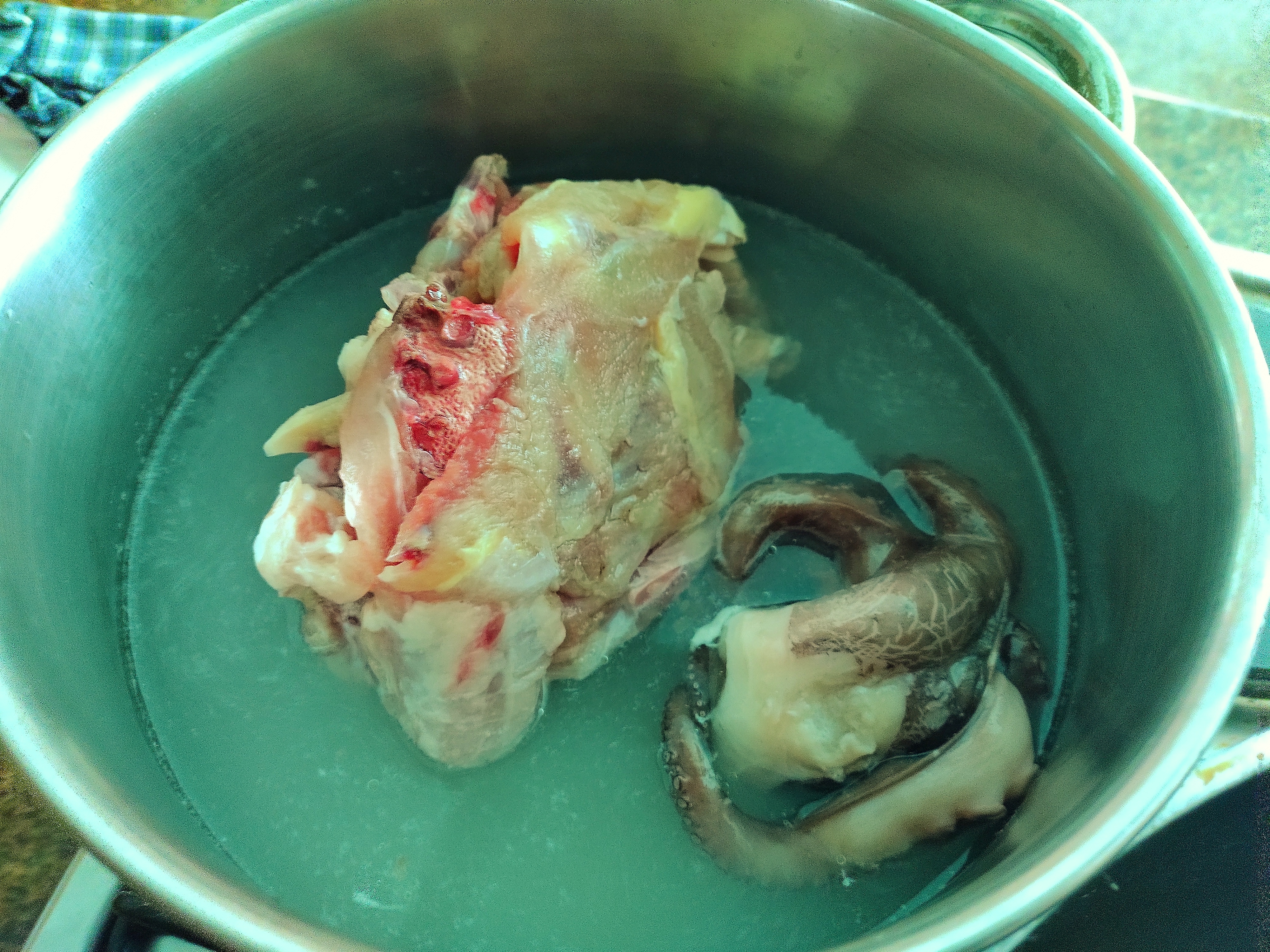
Lo más importante de todo al cocinar el pulpo es que le saques la tinta, porque si se te dañará todo con un sabor amargo de lo peor. Ahí donde ves como el agujero, haces presión como sacando una espinilla antes de meter a cocinarlo.
The most important thing of all when cooking the octopus is that you remove the ink, because if it will damage everything with a bitter taste of the worst. Wherever you see the hole, you press down like pulling out a pimple before putting it in to cook it.
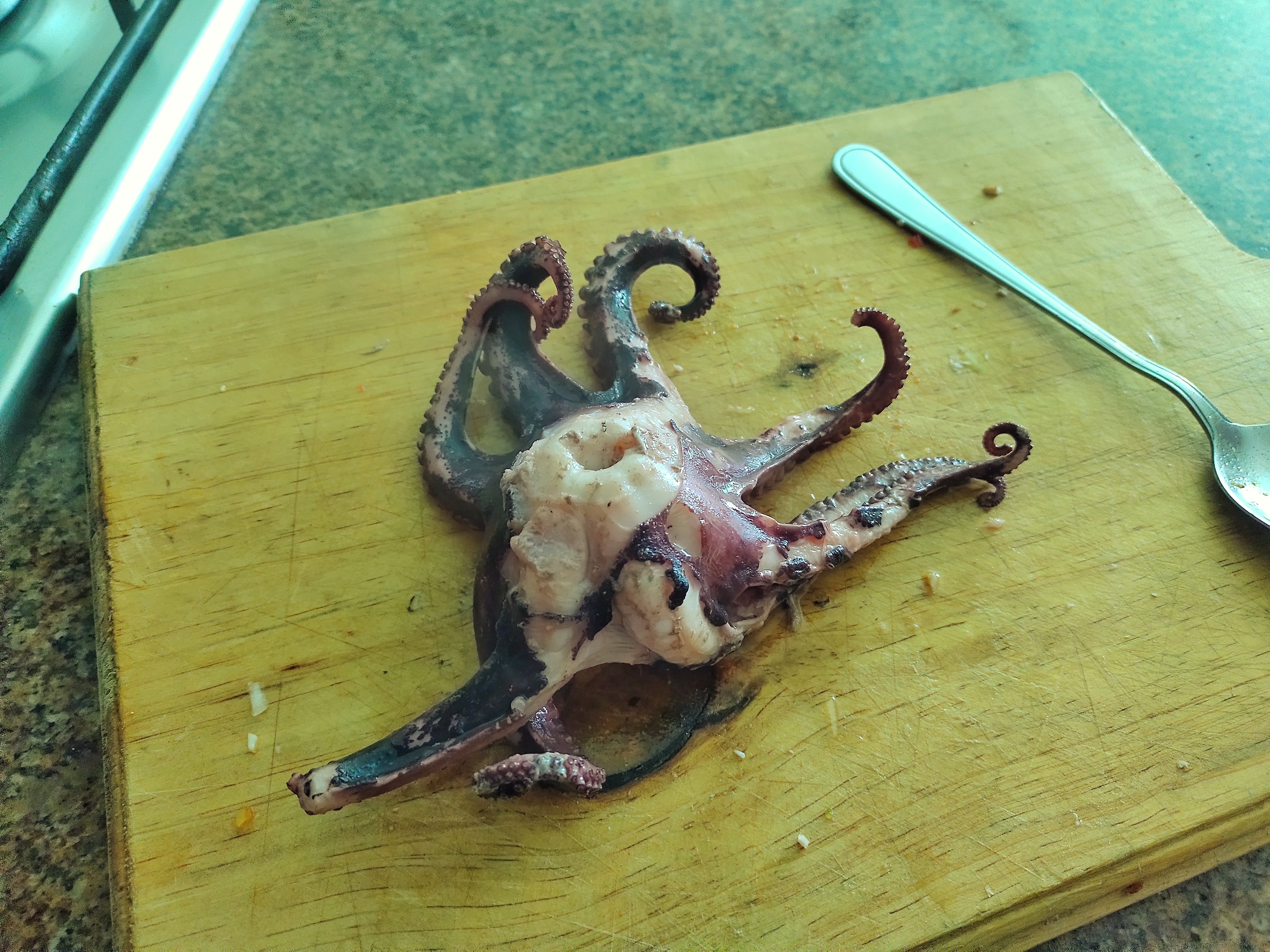
Ya luego de esto solo los troceamos en trozos del tamaño que más te guste. La cabeza la guarde para hacer aros de calamar en otro oportunidad.
After this we only cut them into pieces of the size that you like the most. Save the head to make squid rings another time.
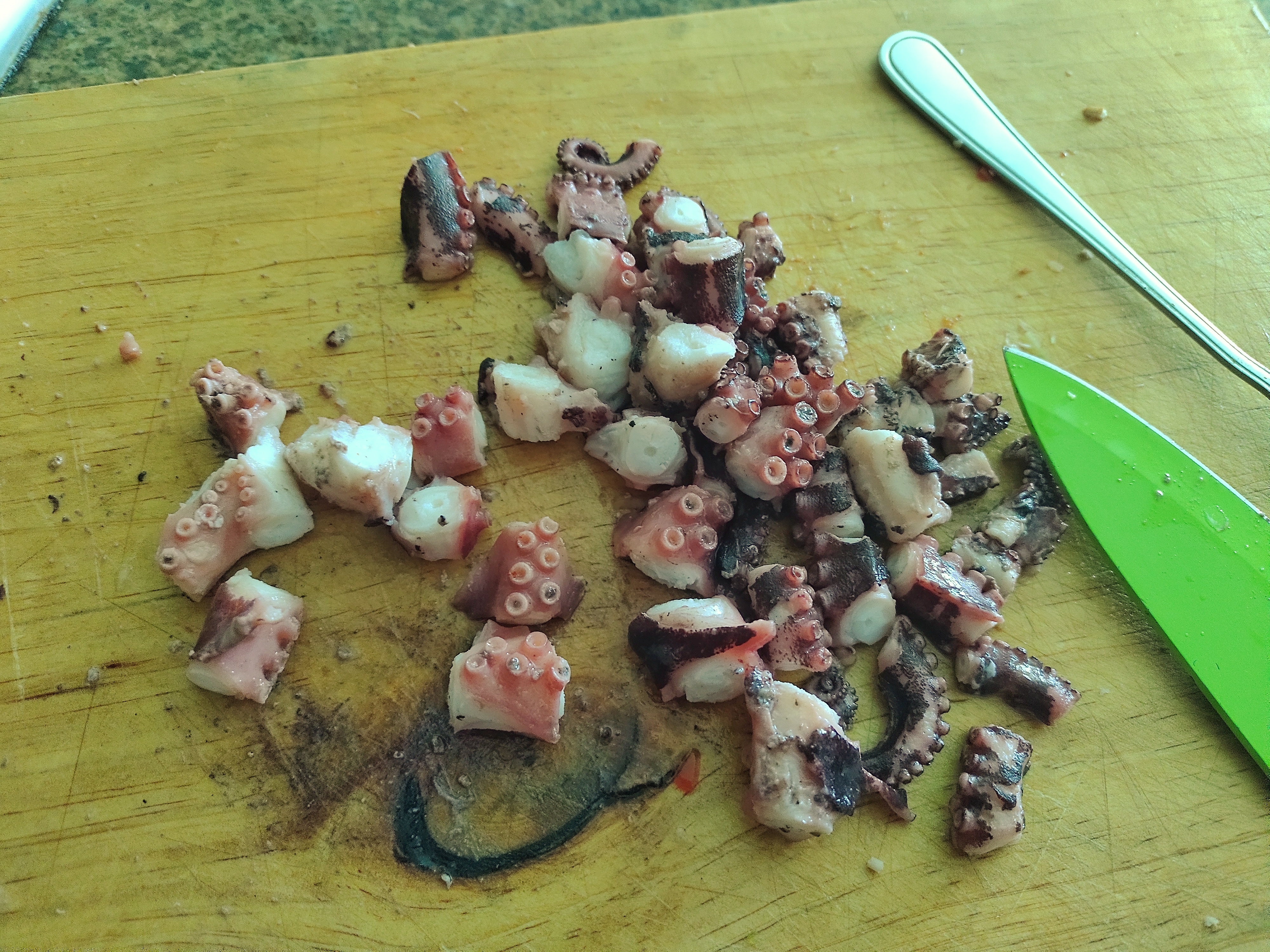
2- Comenzamos a sofreír los Ingredientes / We begin to fry the Ingredients.
En una olla o en un sartén profundo, colocaremos a sofreír los vegetales con la tocineta, aunque dejando para el final el ajo.
In a pot or deep frying pan, we will fry the vegetables with the bacon, although leaving the garlic for last.
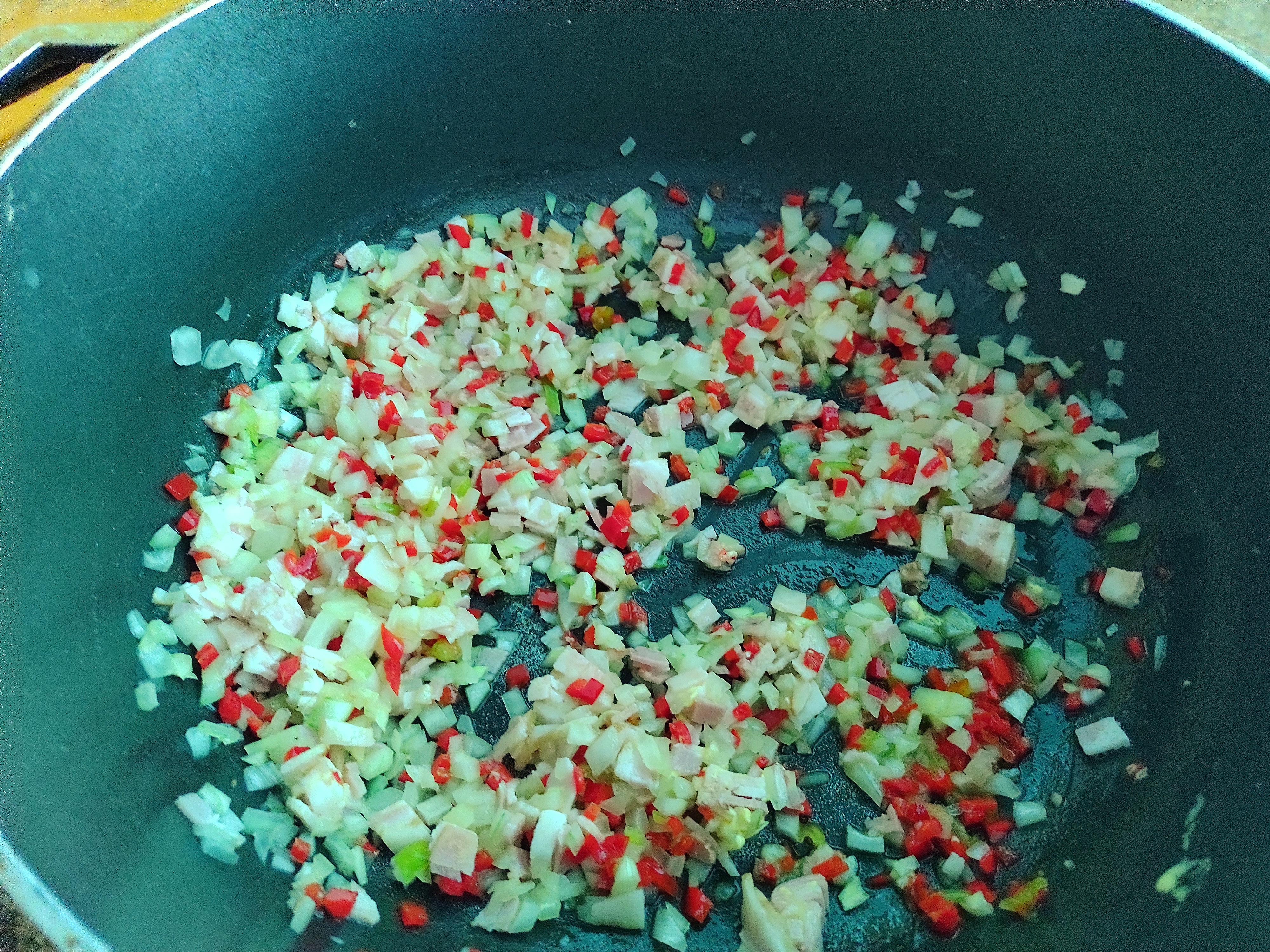
Agregamos el ajo y dejamos todo cocinando a fuego medio / bajo, hasta que la cebolla se tiene translúcida.
Add the garlic and cook over medium / low heat, until the onion is translucent.

Agregamos primero las almejas, que son las que más tardan en cocinarse.
First we add the clams, which are the ones that take the longest to cook.

Luego agregamos el pulpo y los camarones, dejándolos cocinar por muy poco tiempo. Cuando apenas tomen ese color rosado, es hora de agregar el arroz.
Then we add the octopus and shrimp, letting them cook for a very short time. When they just turn pink, it's time to add the rice.
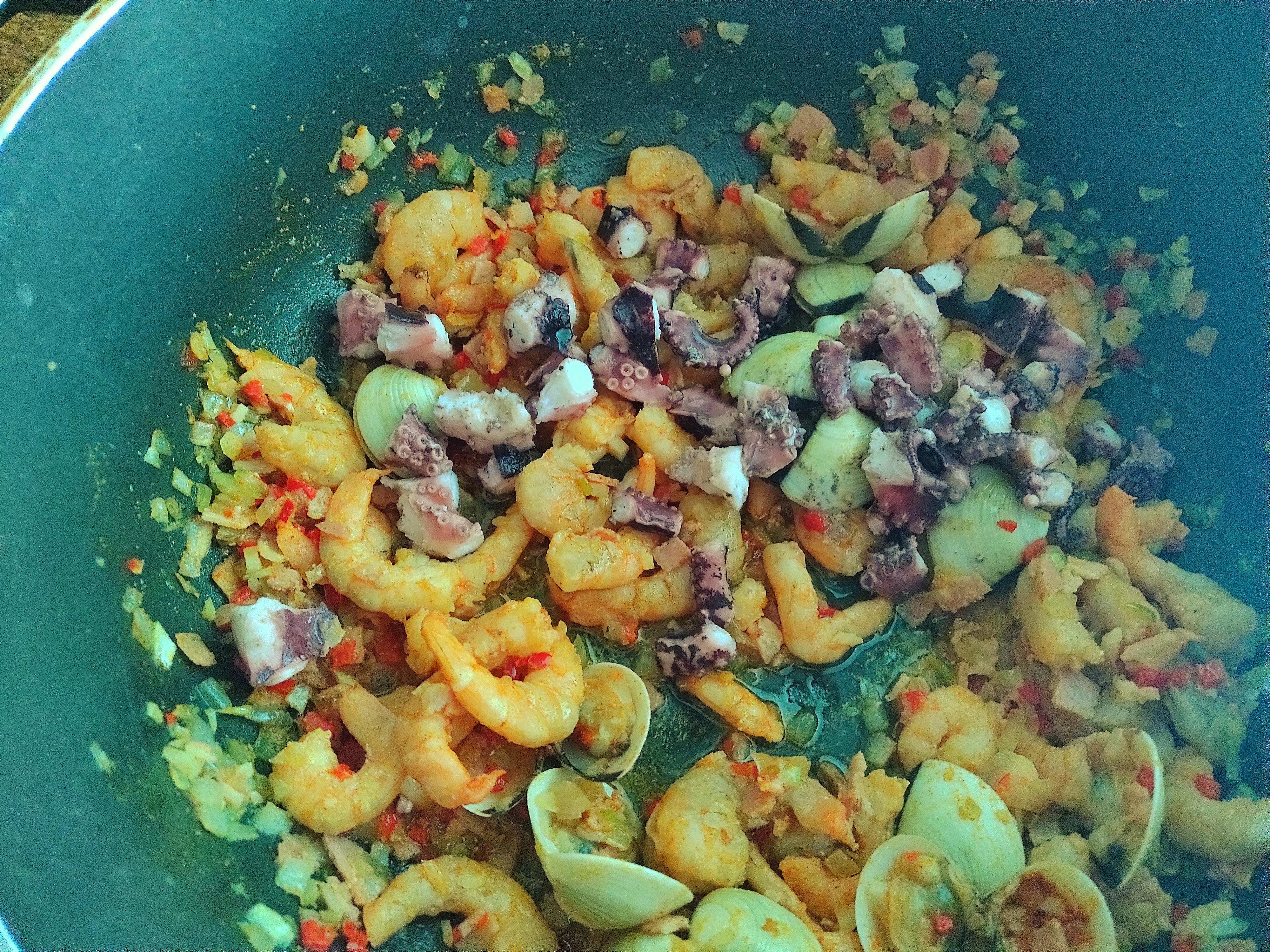
3- Ahora viene lo más difícil, cocinar el arroz / Now comes the most difficult thing, cooking the rice.
Agregamos el arroz al sartén y con ayuda de una cuchara de madera separamos bien los granos.
We add the rice to the pan and with the help of a wooden spoon we separate the grains well.

Ahora agregamos el caldo, que tiene que ser aproximadamente 3 tazas de caldo por cada taza de arroz. Dejamos a llama alta hasta que empiece a hervir y luego bajamos a fuego bajo y tapamos la olla.
Now we add the broth, which has to be approximately 3 cups of broth for each cup of rice. We leave it on high heat until it starts to boil and then we lower it to low heat and cover the pot.
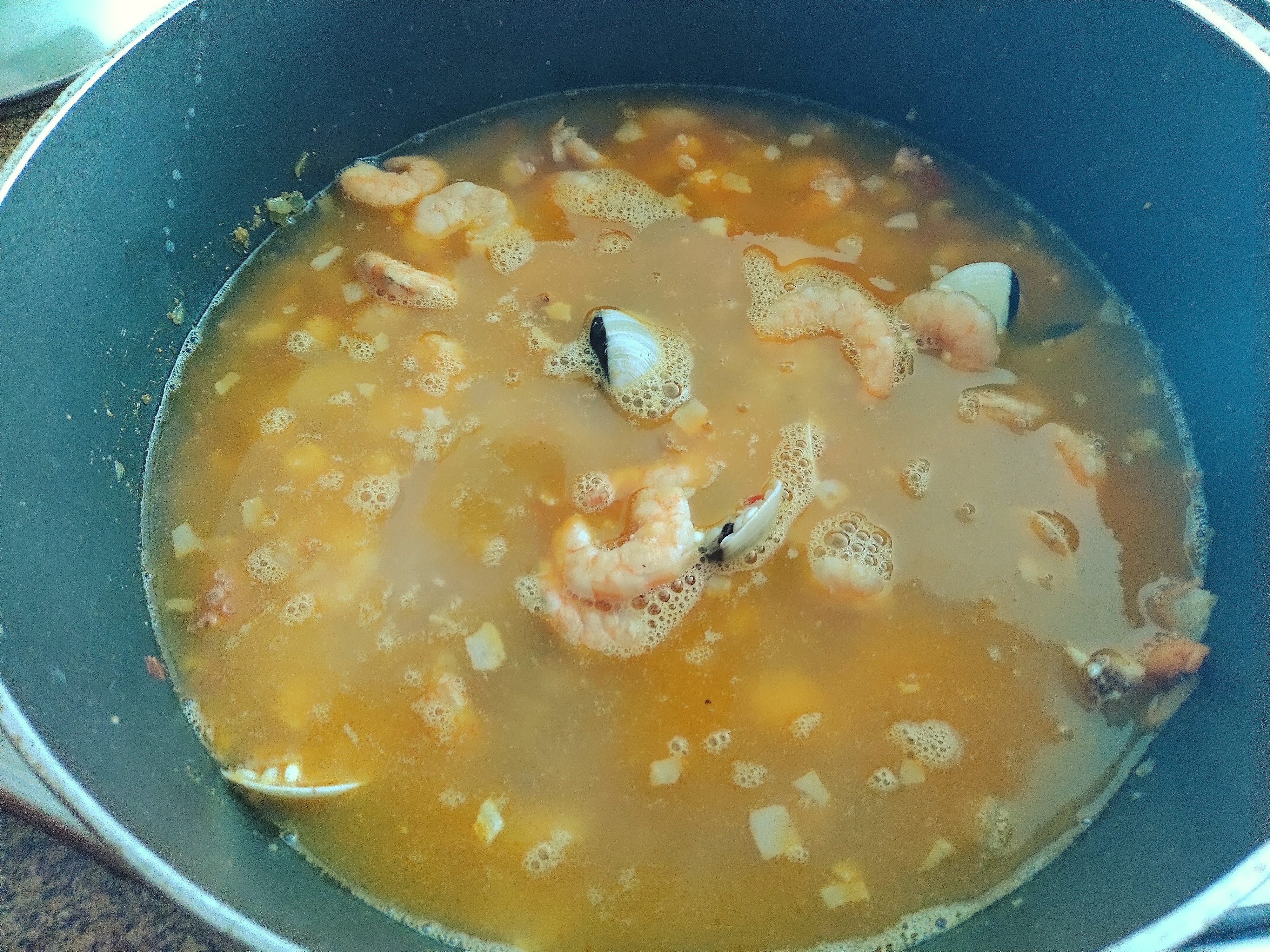
Antes de que hierva el caldo, agregar las especias y comprobar el sabor, puedes también agregar un poco pimienta cayena para darle un agradable sabor picante.
Before the broth boils, add the spices and check the flavor, you can also add a little cayenne pepper to give it a nice spicy flavor.
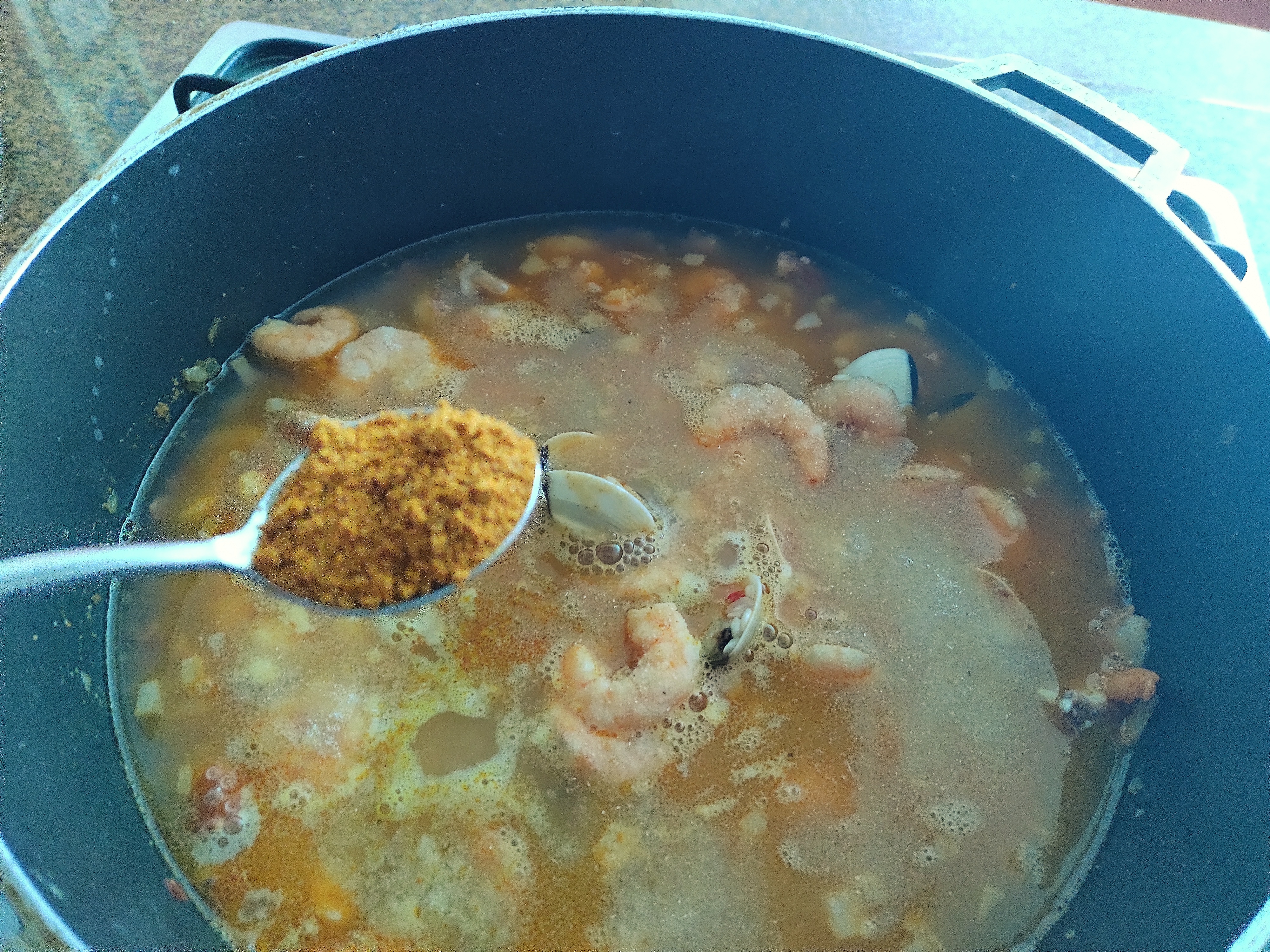
A medida que se vaya secando el arroz, agrega la pasta de tomate, me gusta hacerlo casi al final para que no se diluya completamente el sabor.
As the rice dries, add the tomato paste, I like to do it near the end so that the flavor is not completely diluted.

Comprueba que no se seque el arroz antes de que el arroz este suavecito y cremoso, si ves que le falta un poco de líquido aún, agrega el vino blanco para que se termine de cocinar. Dejar el vino para el final es mi truco personal con el risotto.
Check that the rice does not dry out before the rice is soft and creamy, if you see that it still lacks a little liquid, add the white wine to finish cooking. Saving the wine for last is my personal trick with risotto.
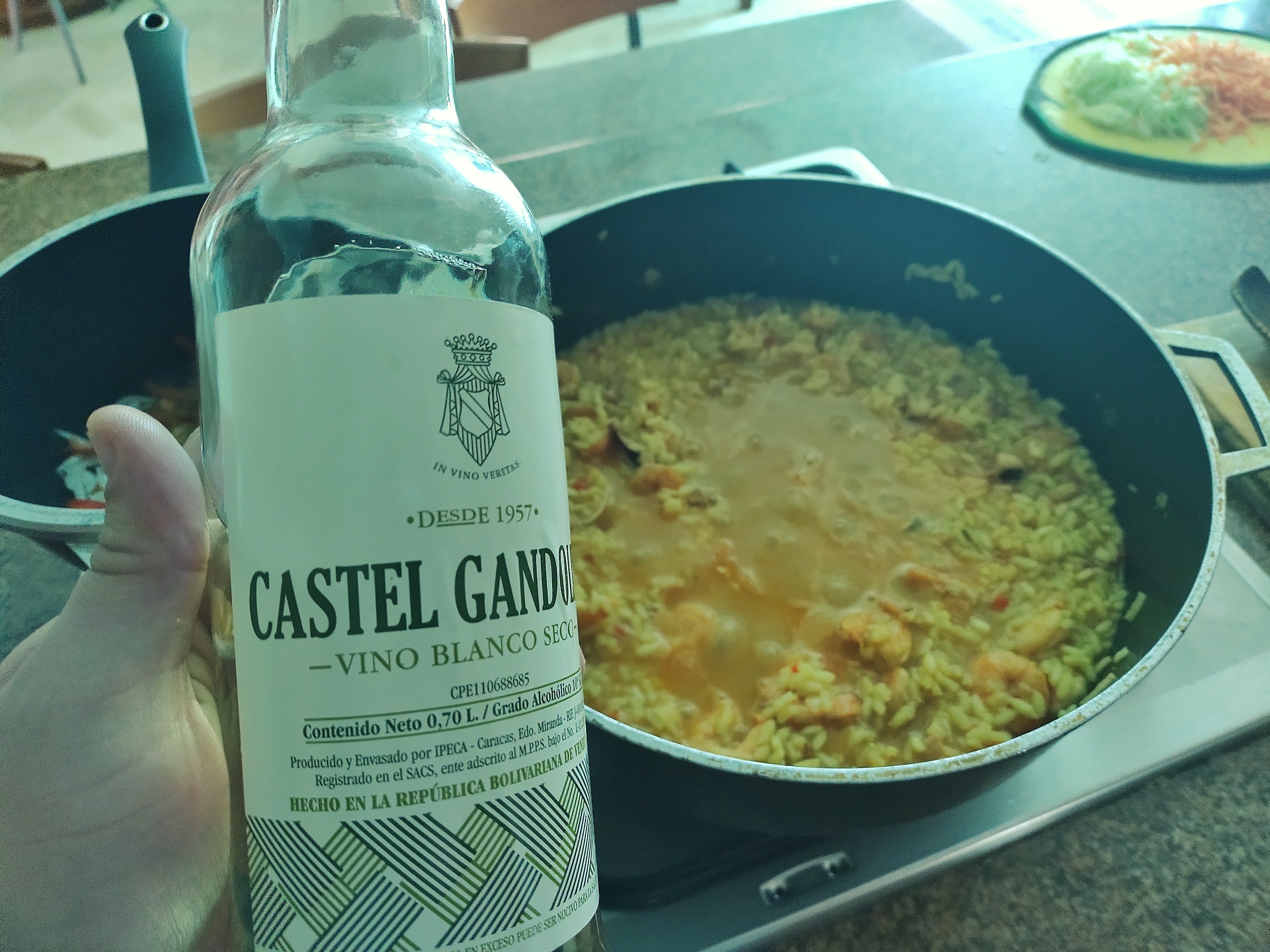
Una vez que esté cremoso y suave el arroz, déjalo reposar unos minutos antes de servir.
Once the rice is creamy and smooth, let it rest for a few minutes before serving.
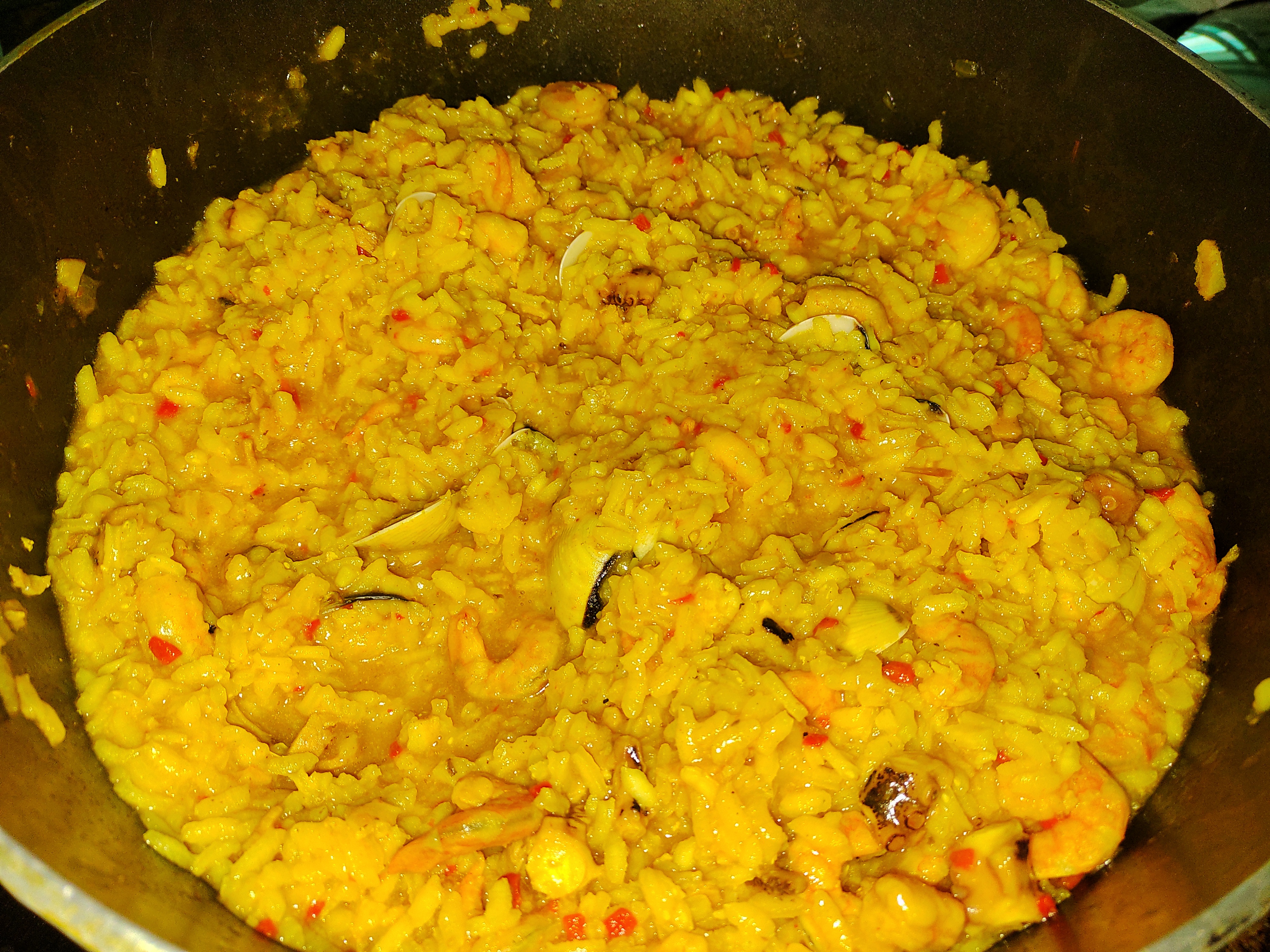
Es hora de servir / It's time to serve.
Para servir este plato a mi me gusta algo super simple, uno o dos panes en el plato, tal vez un poco de cilantro finamente cortado y ya, hay que dejar que el risotto sea la estrella del plato por si solo.
To serve this dish I like something super simple, one or two breads on the plate, maybe a little finely chopped coriander and now, you have to let the risotto be the star of the dish by itself.
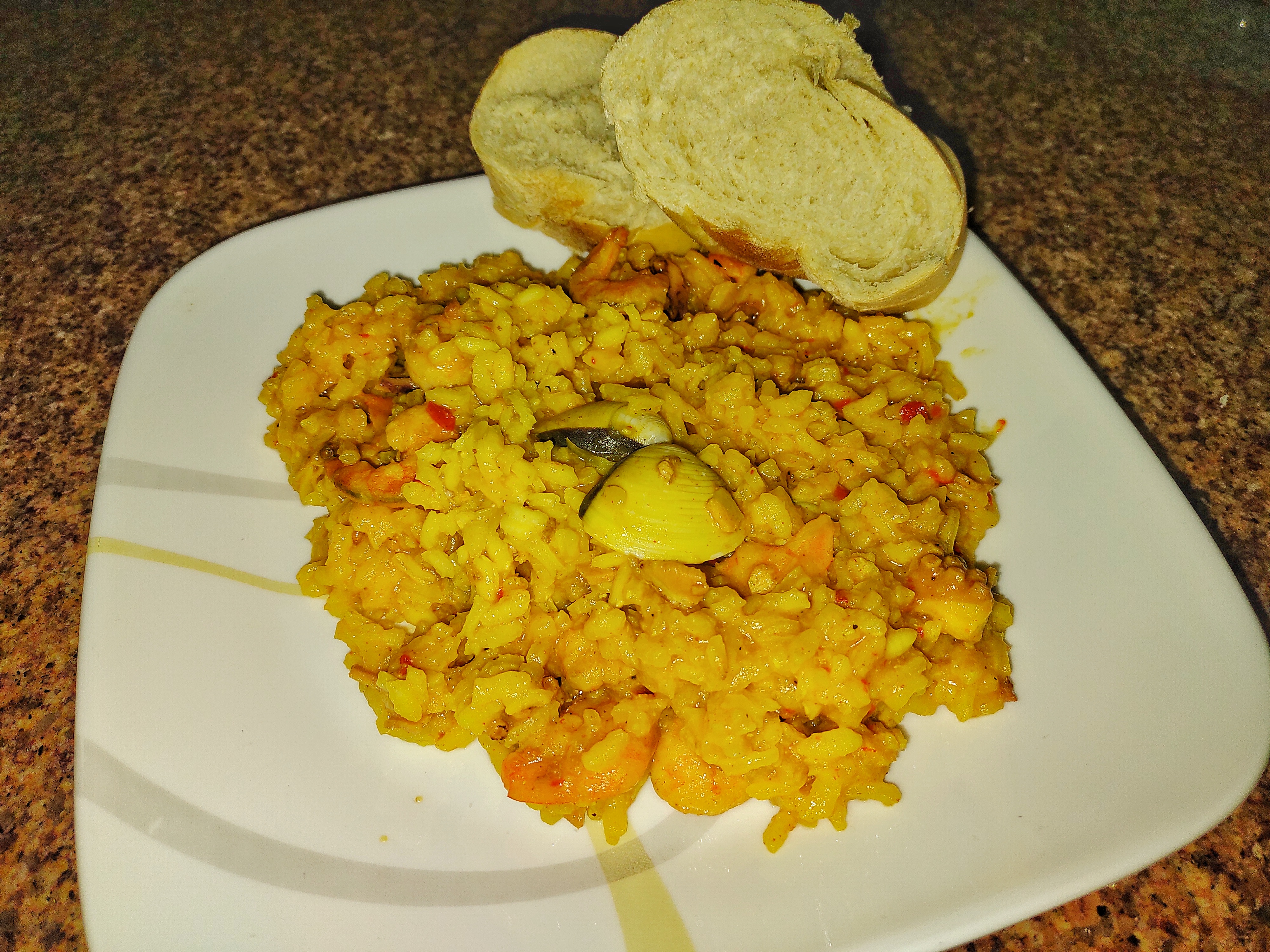
I like this recipe for how detailed it is and the tips you give to cook it properly. I did not know that about octopus, I did know that in certain towns they put 1 copper coin to make it cook faster and my daughter, who is a specialist in various types of food, has told me that its cooking cannot be exceeded, since afterwards it seems a piece of rubber. Certainly, risottos are characterized by their creaminess, by their unctuousness. Good post. Greetings.
Me gusta esta receta por lo detallada que es y los tips que das para cocinarla adecuadamente. No sabía eso del pulpo, sí sabía que en ciertos pueblos le colocan 1 moneda de cobre para que cocine más rápido y mi hija, que es especialista en diversos tipos de comida, me ha dicho que su cocción no puede excederse, ya que después parace un trozo de goma. Ciertamente, los rissotos se caracterizan por su cremosidad, por su untuosidad. Buena publicación. Saludos.
Muchas gracias por tus palabras. Lo de la moneda de cobre no lo habia escuchado, me parece interesante. Si, sucede lo mismo con casi todos los mariscos, si los camarones los sobrecocinas también terminan con una consistencia como gomosa. Saludos!
La moneda de cobre es una costumbre de los pueblos del Mediterráneo. Ciertamente, hay saber la clave para cocinarlos al punto. Saludos para tí también.
Yay! 🤗
Your post has been boosted with Ecency Points.
Continue earning Points just by using https://ecency.com, every action is rewarded (being online, posting, commenting, reblog, vote and more).
Support Ecency, check our proposal:
Ecency: https://ecency.com/proposals/141
Hivesigner: Vote for Proposal